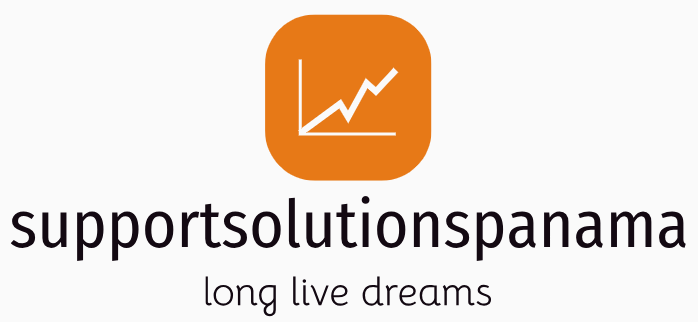How to Use Conditional Logic in Email Marketing

Email marketing remains one of the most powerful tools in a digital marketer’s arsenal. However, in an era of personalization and automation, sending the same message to every subscriber simply doesn’t cut it anymore. That’s where conditional logic comes in. By incorporating conditional logic into your email campaigns, you can send targeted, personalized messages that speak directly to each recipient’s behavior, preferences, and stage in the customer journey. This strategy is increasingly being taught in advanced Digital Marketing Courses in Pune, as businesses recognize its effectiveness in boosting engagement and conversion rates.
In this guide, we’ll explore what conditional logic in email marketing means, why it matters, and how to use it effectively to create smarter, more dynamic email campaigns.
What is Conditional Logic in Email Marketing?
Conditional logic refers to the practice of using “if-then” rules in your email campaigns to customize content based on subscriber data or actions. Essentially, it’s about delivering different content to different people based on set conditions.
For example:
- If the subscriber has purchased a product, then show a thank-you message and upsell options.
- If the subscriber hasn’t opened the last two emails, then change the subject line tone or frequency.
This logic can be applied to the entire email or just parts of it—subject lines, images, product recommendations, or even CTAs.
Why Is Conditional Logic Important?
✅ Hyper-Personalization
Subscribers receive content that’s relevant to them, making them more likely to engage.
✅ Increased Engagement
By tailoring messages based on user behavior, you’re more likely to see higher open and click-through rates.
✅ Improved Conversion Rates
Targeted messages often lead to better ROI because they guide subscribers toward the actions they’re most likely to take.
✅ Time and Resource Efficiency
Automating decision-making reduces the need for multiple segmented campaigns and allows your team to work more efficiently.
Common Use Cases of Conditional Logic in Email Marketing
Let’s look at some practical applications where conditional logic makes a big difference.
- Personalized Product Recommendations
If a user has shown interest in a specific category on your website, emails can highlight similar or complementary products.
Example:
“If user browsed winter jackets → show winter accessories in the next email.”
- Welcome Email Sequences
Create different welcome flows based on where the subscriber came from.
Example:
“If subscriber came via Facebook ad → send a welcome series with social proof.
If from website blog → send educational content first.”
- Cart Abandonment Follow-ups
Segment users who abandon their carts and adjust follow-up messages.
Example:
“If cart value > ₹5000 → offer a discount.
If cart value < ₹5000 → offer free shipping.”
- Email Frequency Adjustments
Adjust how often emails are sent based on engagement metrics.
Example:
“If user hasn’t opened last 3 emails → reduce frequency to once a month.”
- Location-Based Campaigns
Use geolocation to show region-specific promotions or events.
Example:
“If user location = Pune → show invite to a local store event.”
Types of Data Used for Conditional Logic
To make conditional logic work effectively, you need access to reliable data. This data is typically collected via your CRM, signup forms, website interactions, or email engagement metrics.
Key Data Types:
- Demographics: Age, gender, location
- Behavioral Data: Website visits, email opens, clicks
- Transactional Data: Past purchases, cart history
- Engagement Levels: Frequency of interaction with your emails
- Subscription Preferences: Topics of interest or selected categories
How to Set Up Conditional Logic in Email Marketing
Step 1: Choose an Email Marketing Platform with Conditional Logic Features
Not all email tools offer advanced logic. Some popular platforms that support it include:
- ActiveCampaign
- Mailchimp (advanced tiers)
- HubSpot
- Klaviyo
- GetResponse
- ConvertKit
Look for features like “dynamic content,” “logic blocks,” or “conditional content.”
Step 2: Define Your Objective
Ask yourself:
- What do you want to achieve with this logic? (Higher open rates, more conversions, better targeting?)
- What kind of conditions are most relevant to your audience?
Having a clear goal will help you choose the right conditions and actions.
Step 3: Segment Your Audience Based on Relevant Data
Create audience segments or tags that reflect your user’s journey, behaviors, or preferences.
Examples:
- “Frequent Buyers”
- “Cold Leads”
- “Abandoned Cart – High Value”
- “New Signups from Instagram”
Step 4: Build Your Conditions
Use “if-then” statements to dictate which content blocks show to which users.
Example Use Case:
Let’s say you’re sending a promotional email for a shoe brand:
- Condition 1: If user gender = male → Show men’s shoes
- Condition 2: If user gender = female → Show women’s shoes
Step 5: Insert Dynamic Content Blocks
Conditional logic can be applied to:
- Images (e.g., holiday themes for different regions)
- Text (e.g., name, location, product preferences)
- CTAs (e.g., “Buy Again” vs. “Try Now” based on purchase history)
Step 6: Test Thoroughly Before Sending
Always preview the email for multiple conditions. Most platforms allow you to simulate how the email looks for different users.
Test for:
- Content rendering
- Logic accuracy
- Fallback messages (in case data is missing)
Step 7: Monitor and Optimize
Post-campaign, analyze performance metrics:
- Open rate
- Click-through rate
- Conversion rate
- Bounce/unsubscribe rate
Use A/B testing to refine your conditions and content based on what works.
Tips for Using Conditional Logic Effectively
✅ Keep It Simple
Start with one or two conditions. Complex logic can lead to errors or make the campaign difficult to manage.
✅ Have Fallback Options
Not all data fields will be available for every user. Include fallback content to ensure your emails don’t look broken.
✅ Align with User Journey
Make sure the logic corresponds to where the user is in your funnel. Don’t upsell to a new subscriber immediately.
✅ Maintain Consistent Branding
While the content changes, your tone and visual identity should remain consistent.
✅ Don’t Over-Segment
Too many conditions can fragment your campaign and dilute your message. Focus on the conditions that drive the most impact.
Real-Life Example: Conditional Logic in Action
Business: Online Fitness App
Objective: Increase conversion from free trial to paid subscription
Workflow:
- Trigger: User signs up for a 7-day free trial
- Condition 1: If the user completes 3 workouts in 3 days → Send motivational message and upsell
- Condition 2: If user hasn’t logged in after day 3 → Send reminder with beginner tips
Result:
- 35% increase in trial-to-paid conversions
- 20% reduction in churn during the first week
Tools That Support Conditional Logic
| Tool | Conditional Logic Feature |
| Mailchimp | Conditional content blocks (Premium) |
| ActiveCampaign | Conditional splits in automations |
| HubSpot | Smart content and workflows |
| GetResponse | Dynamic content tags |
| Klaviyo | Flow-based logic with segmentation |
| ConvertKit | Conditional blocks in visual email builder |
Final Thoughts
Conditional logic isn’t just a “nice-to-have”—it’s a must-have if you want to send relevant, timely, and effective email campaigns. By leveraging customer data to deliver personalized experiences, conditional logic helps marketers boost engagement, drive conversions, and build stronger customer relationships.
As email marketing continues to evolve with automation and AI, understanding and implementing conditional logic will become a crucial skill for marketers. If you’re serious about building a career in digital marketing or want to scale your business with intelligent campaigns, consider enrolling in digital marketing training in Pune where you’ll learn hands-on techniques in automation, CRM, segmentation, and performance tracking.




![Discover the Future of [Product Category] Discover the Future of [Product Category]](https://images.unsplash.com/photo-1700104494865-200e961d942c?fm=jpg&q=60&w=3000&ixlib=rb-4.1.0&ixid=M3wxMjA3fDB8MHxzZWFyY2h8OXx8cHJvZHVjdCUyMGxhdW5jaCUyMG1hcmtldGluZyUyMGNhbXBhaWdufGVufDB8MHwwfHx8Mg%3D%3D)




